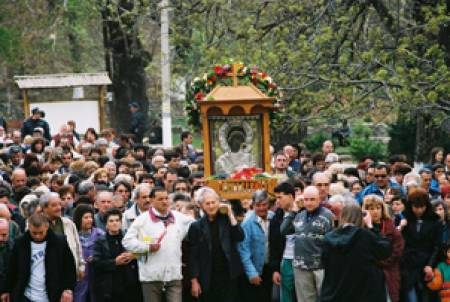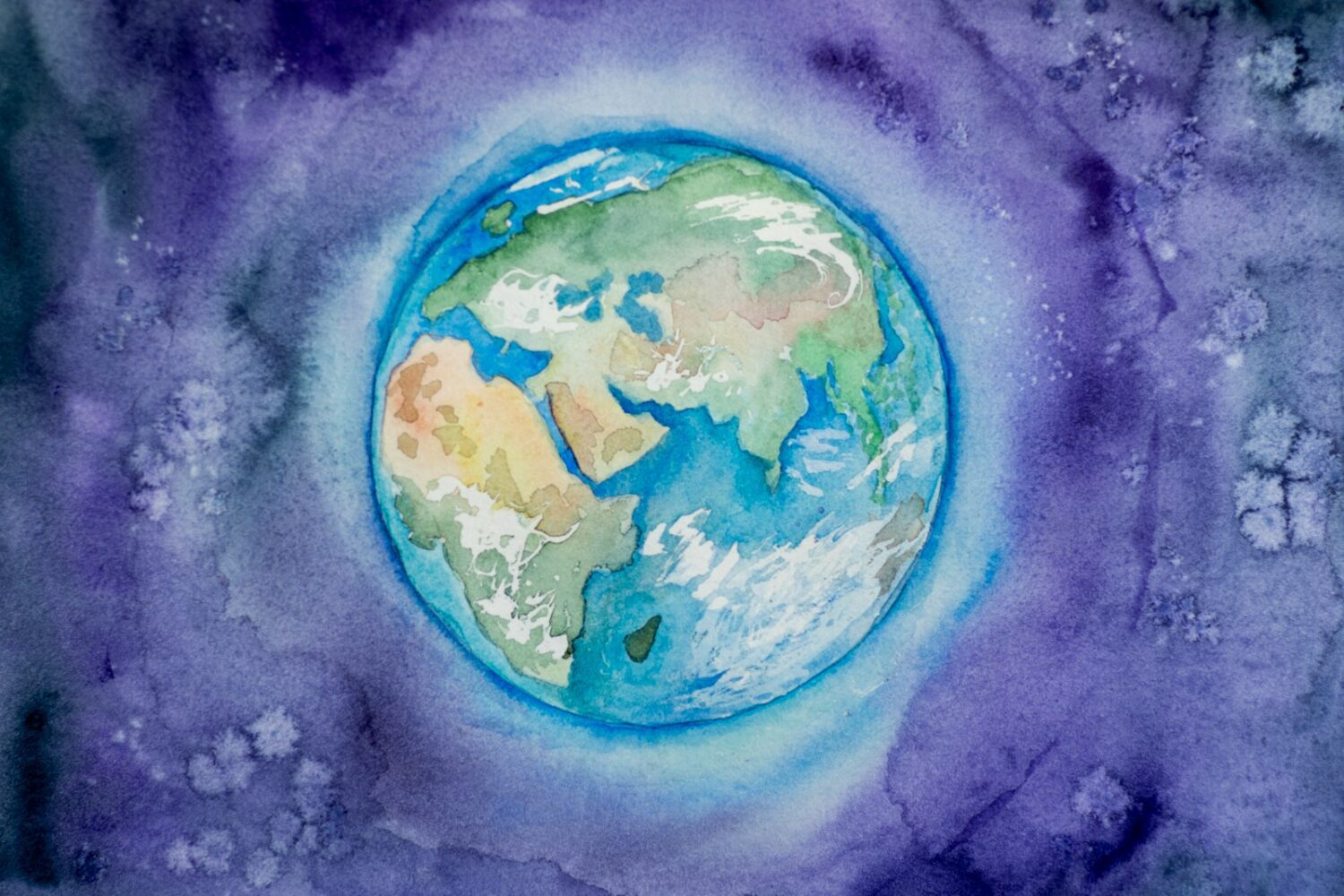“O Del na angle, ame palal” *
(translated from Gypsy “God before us, we after Him”)
The religious picture of Europe is characterized by the fact that Gypsies for the most part profess Christianity and Islam. However, they retain some pagan beliefs and widespread ancient myths. As with all Indo-European peoples, they have their own ethnological legends: about the origin of the universe, its structure, the appearance of the first gods, making the impression that in these myths are worshiped heaven, earth, sun, moon, rain, ie. natural elements.
This is characteristic of a very ancient layer of beliefs and is of undoubted interest to ethnologists. The cosmology (origin of the world) of the gypsies is extremely interesting – they perceive the universe as consisting of three levels: heaven, earth and the underworld. The sky is called Boleben and there live the gods Chon (moon), Kham (sun) and Brishim (rain). The second level (Dis) is inhabited by natural spirits and people – on this level is Phuv (earth). The underground spirits live on the third level.
The Gypsies call God Devel. Like the biblical God, Devel hovered over the earth, which was covered with water. He decided to create the earth, but did not know how and decided to do it with his staff. It hurt in the waters and from it grew a magnificent tree, the tops of which reached the heavens. Under the tree sat Beng, the Gypsy’s devil. God wanted to create the earth, but the evil one planned a deception – he wanted the creation to be attributed to his name. He grabbed the staff of God and uttered his name, but the staff turned to hot iron and burned it: therefore the devil is black. Nine times the devil repeated his attempt without success, until God saw all this and forbade him. Beng obeyed and returned the staff to the Creator-God, Who made the earth. This legend is known in various variants of all Indo-European peoples, and some elements are widespread throughout the planet. Thus, the Gypsies are the children of the mother Earth, starting from the same spiritual sources as the rest of humanity. The cult of the “world tree” is a very ancient concept of the world, whose image is directly or indirectly traced from the Bronze Age in Europe and Asia to the autochthonous Siberian, Indian, African beliefs and traditions today. Equivalent to the world tree are the images of the “world axis”, the “world mountain”, the “world pillar”, and the symbolism of the obelisk, the column, the ladder and others. Among the gypsies, the sacred tree is closely associated with the appearance of the first people to emerge from the leaves of the sacred tree.
That is why the first Gypsy family was called, according to the legend Rukui (“ruk” means in Gypsy “tree”). The world tree of gypsies is very fun and colorful. It grows under the king of the sun. In its branches are all fruits, all seeds; white, black and red birds live in it; its branches rest in the clouds, and in its roots are evil spirits. The Old Testament mentions pagan sacred places “oak” (cf. Gen. 12: 6; 13:18; 14:13; 18: 1; Deut. 11:30; Nab. 19:33; Judges 4:11; 1 Sam. 10: 3; 1 Sam. 16 : 33; 18:19; 4 Kings 13: 6; 17:16; 18: 4; 21: 3; 23: 14-15; 2 Chron. 15:16; 17: 6; 33: 3; Isa. 1 : 29; 27: 9; Jer. 17: 2), which represented a natural or planted group of trees, often located on a hill, among which they placed a statue, a pillar, a statue or a tree (sacred) dedicated to the local deity. In many places such groves in the original are called made temples of Astarte.
The Lord appeared to Abraham near the wooded Mamre. Paganism is a generalized concept that expresses the idea of polytheism, ie. for the existence of many gods. Different religious beliefs until the emergence of monotheism (monotheism) are associated to varying degrees and in different ways with magic, animism, shamanism, fetishism, totemism and ancestral worship.
The god of the gypsies is associated with a good, bright beginning. He is not a cruel or punishing deity, but a just and courageous God, constantly fighting evil. Under the sign of dualism (dualism, Latin “dual”) is a philosophical doctrine of the origin of the world, whose essence consists in the existence of two equal, independent, eternal and independent principles – good and evil, spirit and matter, spiritual and materialism, dualism views creation as the influence of the spiritual principle on the material), ancient Greek philosophy and Gnosticism developed, as did various Middle Eastern religious teachings, including Paulicism, and the most prominent representative of dualism in Western European philosophy was Rene Descartes. The difficult life of the gypsies has given a specific dualistic shade to their religiosity – they are extremely careful about the devil, as the Gypsy proverb says: “If you light one candle to God, light two to the devil.” Beng (the devil), standing at the roots of the sacred tree, is an unclean force that has been in conflict with God since creation. Apart from the devil, the gypsies distinguish other evil spirits: ephurdako – a spirit that lives under the bridges; diminutive – Polish spirit; drumenko – a wandering spirit. Evil spirits that live underground are especially dangerous. Their mother is Anna, who gave birth to nine terrible devils. They married each other and gave birth to even more evil spirits. Their names have an impact, charged with a lot of emotion, because they are associated with unpleasant sensory sensations such as Lily (slimy), Shilalo (cold, cold), etc. In ancient classical literature, a demon is a good god or being with divine power, but in the Gospels, demons (Greek: evil spirit, devil, satan) are always hostile to God; their leader is Beelzebub (Satan); in New Testament books, demon-possessed people also show somatic symptoms such as dumbness, epilepsy, and abnormal behavior.












